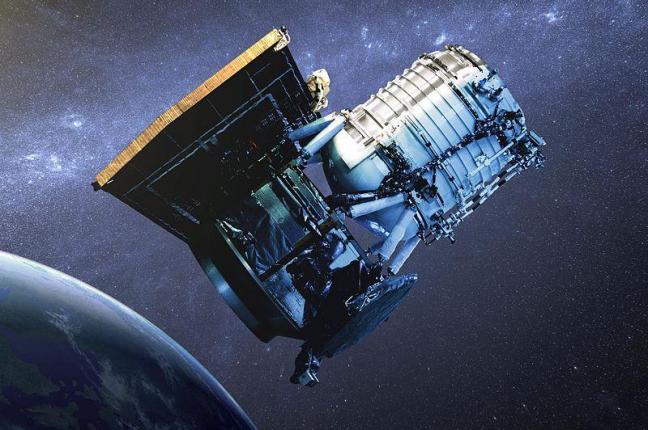Survey of 100,000 Galaxies Yields no Evidence of Alien Civilizations
 STATE COLLEGE, Pa., April 14 (UPI) — Researchers at Penn State University analyzed data from NASA’s WISE observatory, a space-based infrared telescope, for data that might suggest the presence of faraway alien empires. Their analysis turned up no sure signs.
STATE COLLEGE, Pa., April 14 (UPI) — Researchers at Penn State University analyzed data from NASA’s WISE observatory, a space-based infrared telescope, for data that might suggest the presence of faraway alien empires. Their analysis turned up no sure signs.
“The idea behind our research is that, if an entire galaxy had been colonized by an advanced spacefaring civilization, the energy produced by that civilization’s technologies would be detectable in mid-infrared wavelengths — exactly the radiation that the WISE satellite was designed to detect for other astronomical purposes,” lead investigator Jason T. Wright, an assistant professor of astronomy and astrophysics at the Penn State’s Center for Exoplanets and Habitable Worlds, explained in a press release.
The idea of using infrared readings as a way to search for alien civilizations was first proposed by the physicist Freeman Dyson. In 1960, Dyson wrote and published a paper in the journal Science titled “Search for Artificial Stellar Sources of Infrared Radiation,” in which he theorized that a highly advanced extraterrestrial civilization would use most of its sun’s energy. Such energy-harvesting processes, Dyson explained, would limit the amount of visible light expelled outward and increase the levels of infrared radiation.
[one_fourth]
[/one_fourth][three_fourth_last]
It wasn’t until recently that data collected by NASA’s WISE satellite finally made testing Dyson’s theory possible.
“Whether an advanced spacefaring civilization uses the large amounts of energy from its galaxy’s stars to power computers, space flight, communication, or something we can’t yet imagine, fundamental thermodynamics tells us that this energy must be radiated away as heat in the mid-infrared wavelengths,” Wright said. “This same basic physics causes your computer to radiate heat while it is turned on.”
While the analysis turned up no obvious signs of alien empires, it did highlight 50 galaxies featuring unusually high levels of mid-infrared radiation. Researchers plan on following up their findings with explorations into the causes (natural astronomical processes, most likely) of such anomalies.
“This research is a significant expansion of earlier work in this area,” concluded Brendan Mullan, director of the Buhl Planetarium at Pittsburgh’s Carnegie Science Center. “The only previous study of civilizations in other galaxies looked at only 100 or so galaxies, and wasn’t looking for the heat they emit. This is new ground.”
The new survey will be published in the April 15 issue of the Astrophysical Journal.
Copyright 2015 United Press International, Inc. (UPI). Any reproduction, republication, redistribution and/or modification of any UPI content is expressly prohibited without UPI’s prior written consent.
All rights reserved.






